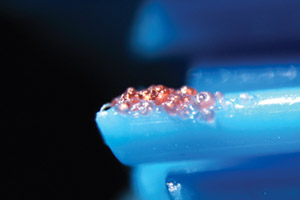Guidance on the use of Colour-Coding to improve food safety and quality
Understanding the hazards that can affect food safety and quality
Food-borne disease
The greatest risk to food safety is from food-borne diseases. In the European Union (EU), over 320,000 human cases are reported each year, but the real number is likely to be much higher (1).The World Health Organisation (WHO) estimates that, worldwide, foodborne and water-borne diarrhoeal diseases, taken together, kill about 2.2 million people annually(2).
The risks of contamination are present from farm to fork and require prevention and control throughout the food chain. For those concerned with protecting food safety and/or working in the food processing industry the significance of food-borne disease is of particular concern.
The most common micro-organisms that cause food borne diseases are;
Bacteria
- Campylobacter, Salmonella, Listeria, Escherichia coli (E. coli), and Yersinia
Bacterial toxins
- Toxins of Staphylococcus aureus, Clostridium perfringens, Clostridium botulinum and Bacillus cereus
Viruses
- Calicivirus (including norovirus), rotavirus, hepatitis A virus, hepatitis E virus
Parasites
- Trichinella, Toxoplasma, Cryptosporidium, and Giardia
Learn more about the impact of food safety incidents on the food industry and how to minimise the risk of food contamination with this Vikan White Paper




